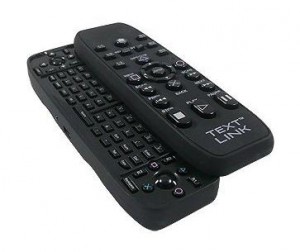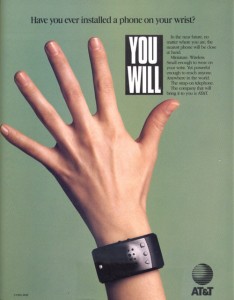A True PlayStation Television
by NorseGamer, HSM Editor-in-Chief
Following Sony’s overall fiscal performance is a fascinating read, particularly when it comes to their television segment. Their losses are a matter of public record, as is their optimistic plan to achieve profitability by March 2014. Indeed, this month they’re supposed to unveil an 84-inch 4K LCD, as the 1080p standard is slowly replaced.
Here’s the problem, though: has Sony become so fixated on what it wants to sell that it’s forgotten to examine what people are looking to buy?
Let’s use the Vita as an example. Here’s a brand new hardware platform designed to grab a piece of the burgeoning mobile gaming market. So why are sales so anemic that Sony once again lowered its sales projections for it?
Well, from this consumer’s standpoint, it’s pretty simple: if I’m gaming on the go, I want something that’s cheap, casual and mindless — so why bother spending money on a new handheld console and new games when I can save a hell of a lot of money and just buy games for my smartphone? Further, if I have the kind of money to blow on something more expensive like the Vita, I’m probably old enough to want to avoid the social stigma of being looked at in public as a stereotypical hardcore gamer with no life. Adults stuck on a commuter train, for instance, think nothing of seeing someone casually playing Angry Birds or Fruit Ninja on their cell phones; conversely, though, seeing a grown adult mashing away on an expensive portable gaming rig is…well, uncool.
Sony’s obsession with maintaining its position as the bleeding-edge tech heads frankly isn’t doing them any favors.
Let’s go back to Sony televisions for a moment. Last year, Sony unveiled the PlayStation 3D TV, which would retail for $500:
Please tell me you see the obvious problems here.
Given the small screen size, it’s designed to appeal primarily to teenagers (as clearly evidenced in the marketing video) — who probably don’t have the money to spend on such a thing. And even if they do, why invest in such a small screen? Dual-play independent 3D? So now you’re going after a very niche audience, because like it or not, 3D is still a fad. If I have a choice between a larger 2D screen and a smaller 3D screen that requires me to physically wear a cumbersome peripheral (whose sole selling point is that I can game with someone else at the same time, ignoring the fact that most multiplayer gaming is done over the internet), guess which way I’m going.
Sony, again, got so wrapped up in what they were trying to sell that they ignored what people are willing to buy. And the end result is predictable: yet another loss.
 Which got me to thinking: if Valve is on the right track by experimenting with bringing Steam to your TV, then why hasn’t Sony explored the one unique advantage it has over its console rivals (Microsoft and Nintendo), by exploiting its position as a television manufacturer? Why not create a TV that has a PlayStation console built into it?
Which got me to thinking: if Valve is on the right track by experimenting with bringing Steam to your TV, then why hasn’t Sony explored the one unique advantage it has over its console rivals (Microsoft and Nintendo), by exploiting its position as a television manufacturer? Why not create a TV that has a PlayStation console built into it?
This isn’t exactly a new concept. Vizio is already working with OnLive to stream games directly to the television, with no console required. And the Ouya console proposition struck a chord with a lot of people because it’s trying to lower the barrier to entry for developers to get their work to living-room televisions.
The television is the key. It’s the one piece of equipment every gamer has — but more importantly, it’s the one piece of equipment most American households have, and that latter number is far larger. So, if you’re Sony, why not take the next logical step and embed whatever components are necessary to allow households with a Sony TV to directly access the PlayStation Network and games?
The strategy here is simple: if it’s a service available on the television, then a percentage of TV purchasers will explore it. The average video game purchaser, regardless of how casual or hardcore they may be, is in their thirties; this means that household gaming habits have to be taken into consideration. For the adults with no children, the convenience of not having a separate game console — since it’s just all built into the TV itself — has no drawbacks, particularly as we enter the age of digital downloads (with physical media coming to an end). And, for the adults who need to purchase something for their children as well, having a TV with a built-in game system is a major selling point, even if it forced the TV to have a higher price than comparable models from competitors. Again, convenience.
 A potential challenge may be the remote control. Conventional TV purchasers may be turned off by the idea of a remote that looks like a game controller. And, conversely, it could be challenging to create a conventional TV remote that could also function as a game controller. So the one drawback is that such a TV system would probably have to be sold with a TV remote and a game controller, which could be a bit cumbersome, unless a suitable ergonomic two-in-one design could be achieved or Sony decided to fully embrace motion-controller technology. Aside from this hurdle, though, I’m struggling to find any major downside. If Sony has already invested the money into developing a new hardware console, then it would seem a logical leap to invest in translating the guts of that console to their own proprietary televisions.
A potential challenge may be the remote control. Conventional TV purchasers may be turned off by the idea of a remote that looks like a game controller. And, conversely, it could be challenging to create a conventional TV remote that could also function as a game controller. So the one drawback is that such a TV system would probably have to be sold with a TV remote and a game controller, which could be a bit cumbersome, unless a suitable ergonomic two-in-one design could be achieved or Sony decided to fully embrace motion-controller technology. Aside from this hurdle, though, I’m struggling to find any major downside. If Sony has already invested the money into developing a new hardware console, then it would seem a logical leap to invest in translating the guts of that console to their own proprietary televisions.
Maybe this idea has already been considered and shot down within the walls of Sony. Maybe there’s a very good reason why this hasn’t been tried yet. I don’t know. What I do know, however, is that I can’t yet think of a suitable reason to not try it. Who wouldn’t want to buy a television that had gaming capabilities already baked into it? It’s no different than a smartphone with casual gaming apps. In both cases the hardware may not have been designed specifically with gaming in mind, but gaming can realize significant gains by making it easier and more convenient to be easily-accessed on both.
Anyway, it’s a thought.



 LinkedIn
LinkedIn Twitter
Twitter
It’s a great thought! Since the PS3 just been put on another diet, lost some more weight, I’m pretty sure you could squeeze those components into the backside of a screen. And yes, it would attract more to the medium. Aside from price and potential problems with breakdowns, I dont see why not either.
The Vita didn’t do well because just like it’s little brother (PSP) it lacked a good stream of fresh content in its first year. I also blame the Go! It was stupidly obvious they were testing the market to see how ready the world was for DL only gaming, and lack of compensation for those willing to take the leap put the few believers off. So Sony had taken away physical media from PSP owners, told them they’d be able to transfer their already owned games over to it then at the last minute decided to make people pay for games THEY ALREADY OWNED FOR PSP again.
It’s no wonder the Vita hasn’t done well. For me, it’s the feel of the machine, gives me cramp holding it -- buttons are too close to the edge. Which sadly means, I’ll probably never buy one.
I own a Sony Bravia and I love it. Theres some interresting widget that come with it, Wi-fi. But I rarely use them (ehh, now it’s more like never). The idea of having a full gaming console buit-in sound great. But I already had to pay some extra to have the Sony name on it. How much will that cost? What if I have a major problem with the console? With the reliability issue of new gen consoloe the year they hit the market. As a consumer I will be extremely cautious.
That said. I think thats where the market will eventually go. We see merging of all the appliance already. Phone, computer, TV or game console. I’s basically a cpu with a display and some way to interface with it.
A gaming system built into a television set wouldn’t sell because if the gaming system goes kaput, how does one replace it? Is it plug and play or what is the deal on how it works.
Opinion, not fact.
Using that analogy, Kid, how does Apple repair an iMac — which is an all-in-one system — when something goes wrong?
In the past, there have been TVs with VCR/DVD players built into them. How are they repaired if something goes wrong?
Replacing a component in a game system mated to a television is logically no more difficult than the examples I’ve cited above.
An iMac is a computer not a television set. I don’t see the comparison.
I’ve never bought a TV with a VCR or DVD in it so I don’t know what the warranty is. They are sold and bought. If out of warranty I am going to assume if the DVD player is not a plug and play then one uses the television as is or else buys a new one (or a standalone DVD player for the television).
At one time televisions used to be repaired when broke. Now they are cheaper in price that people buy a new television when they break. At least so a television repairman who later went out of business told me.
Some people now have their computers plugged into their television sets and use the television set as a monitor. I don’t know what percentage of people do this.
I think it would be absolutely cool if a television set could be built with a game system built in. However, while not at all a technical person, it’s my understanding that internet device electronics are more prone to static problems, power surges, etc then a television set be itself. I’ve got a lot of things connected to my television set (not my computer) and I’d hate to replace the whole kit and caboodle if one built in part went poof. Unless it was something that was plugged in.
Too long a Reply perhaps, but it better explains my thinking. Someday we will have a television with a gaming system built in. But I think it’ll have to be something that can be removed and leave the rest intact. I look forward to the day.
Opinion again, not fact.
An iMac is a display device with computer elements built in (hard drive, CD drive, et cetera). A television is a display device, which has also had technology built into it in the past, such as DVD players. It is not a major leap to look at incorporating the key components of a game console into a display device, particularly if you have one manufacturing company responsible for both.
Keep in mind that televisions already exist with internet technology built in. Look at Sony’s own KDL-60EX645, for instance.
The one drawback with built-in game system elements isn’t the repair cost — it’s the service cost. A stand-alone console can be boxed up and shipped to a service center, whereas that’s often impractical to do with an entire TV. That’s the only major drawback I can see.
I suspect the primary reason why Sony hasn’t tried this yet is the same reason why I think it *should* happen — how to overcome the price differential versus comparable televisions that wouldn’t have game systems built into them. And yet with the decline of console sales in general, it seems to me to be a logical method of maintaining — or even advancing — market share. As Mike pointed out, though, the fewer physical components, the better.
The major Critiscism cited for the Vita (and i am quoting from another publication here) was that the games made for it seemed to be PS3 conversions. Now some of these games are BEST played on a 40 to 50 inch screen (which is average now in todays standards) and most handheld gaming, even cell phones are going casual.
Why?, well you’re NOT exactly going to be able to concentrate on playing ‘Assassin’s Creed 3′ on your rush train journey to work. These games need alot of time and investment for it to pay off for you.
Angry Birds is fine. And i do find that Retro remakes of much older games can do wonders for ‘On the go’ Gaming.
Im a retro gamer, and i do believe old school arcade games wrapped up in todays graphics could do really well for the handheld format.
I like online shooters (Call Of Duty / Battlefield)
These are also good examples of where to go for Handheld gaming, the fact that you can drop in or drop out of a game is another incentive to own a vita.
As far as TVs go.. I’m not even sure that we are ready, I guess we could be, but as consumer it would be nice to have sometjong that isnt a mixed bag of everything.
I love the idea of having a working Playstation, key word is working..If its as reliable as MY PS3 THEN No Thank you… I have had no luck with my PS3. I much rather see the service as a downloadable App that can be downloaded to a ” smart TV” or tablet computer. The less hardware the better.
Combining a gaming console with TV narrows the appeal of the tv, unless your a gamer, and if you are, you will buy a games console anyway, built into tv or not but someone that isnt a gamer wont but that tv. One problem I noticed with ps3 tv was 2 teens in the same room playing a game. one teen and a slice of pizza in same room perhaps lol .
Digital tuners Gary. In the UK, we had a “digital switchover” whereby anyone who refused to change their tuner from an analogue signal to a digital one would simply be left with a TV that picks up nothing but the glorious fuzz of our universes big bang echo!
Manufacturers decided to make TVs with digital receivers built in. No one complains -- no one notices. Thing is, if the functionality is already built in, curiosity will bring them to at least check it out, gamer or not. I cant tell you how many people I’ve met in this “gaming social network” only available through a games console, that have told me they dont play games.